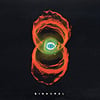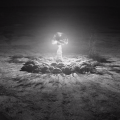Capitol Riots 2
Comments
-
A list of who's who on the wacky side of the GOP. Missing a few others though.Merkin Baller said:I’m old enough to remember when conservatives pretended blue lives mattered.
A dozen House Republicans voted against a resolution to award three Congressional Gold Medals to the Capitol Police, the D.C. police and the Smithsonian Institution in recognition of those who protected the U.S. Capitol when it was attacked by a pro-Trump mob on Jan. 6.
The GOP lawmakers, who said they objected to the use of the term “insurrectionists” in the resolution, are: Andy Biggs (Ariz.), Thomas Massie (Ky.), Andy Harris (Md.), Lance Gooden (Tex.), Matt Gaetz (Fla.), Marjorie Taylor Greene (Ga.), Louie Gohmert (Tex.), Michael Cloud (Tex.), Andrew S. Clyde (Ga.), Greg Steube (Fla.), Bob Good (Va.) and John Rose (Tenn.).
“We had to combine it with these editorial comments about the January 6 sequence of events, and then we had to logroll it with this exhibit at the Smithsonian, and … that was a little much for me,” Gaetz said after the vote.
Massie also objected to the use of the word “temple,” saying it was “a little too sacrilegious for me.”
The resolution states: “On January 6, 2021, a mob of insurrectionists forced its way into the U.S. Capitol building and congressional office buildings and engaged in acts of vandalism, looting, and violently attacked Capitol Police officers.”
It also says: “The desecration of the U.S. Capitol, which is the temple of our American Democracy, and the violence targeting Congress are horrors that will forever stain our Nation’s history.”
It's a hopeless situation...0 -
0
-
And stood by watching people using the very flag he so proudly defends in all other parts of the world to beat cops with! Yeah I’m done believing in American patriots ..Bentleyspop said:jesus greets me looks just like me ....0 -
https://twitter.com/thedailybeast/status/1373448030590996485?s=21
Weird swat teams using all kinds of weaponry to disperse crowds yet on 1/6 treated the swarms of idiots with kid globes ..jesus greets me looks just like me ....0 -
·MARCH 22, 2021, 1:18 PM
Detention ordered for suspect in chemical spraying of U.S. Capitol officers
Sarah N. LynchWASHINGTON (Reuters) - A judge in West Virginia ordered U.S. Capitol riots suspect George Pierre Tanios detained on charges he conspired with a friend to assault three police officers with chemical spray, including one officer who later died.
U.S. Magistrate Judge Michael John Aloi lamented a “culture, radicalized by hate” that played out at the Capitol on Jan. 6 during a peaceful transition of power.
“We all witnessed it as Americans: Forcing yourself against law enforcement officials that had nothing but bike racks,” Aloi said. “Why wouldn’t you just turn the other way and go home? The fact that all of them weren’t thinking that - it’s just frightening to me.”
Hundreds have been charged with taking part in an attack that led to five deaths after a mob of then-President Donald Trump's supporters stormed the building here in a failed bid to stop Congress from certifying President Joe Biden's election victory.
In an emotional court hearing that featured testimony from Tanios’ family, prosecutors presented evidence that Tanios had purchased the bear and pepper sprays which he later brought with him to the Capitol. One of the sprays was used by his friend to spray police, prosecutors said.
Prosecutors also said they had reason to believe that Tanios’ mother would try to help her son flee the country to her native Lebanon if he is released from custody. The mother denied the claim in court.
FILE PHOTO: George Pierre Tanios poses for a booking photograph released by the West Virginia Regional Jail & Correctional Facility Authority March 14, 2021. WVRJA/Handout via REUTERS.Tanios of Morgantown, West Virginia, and a friend, Julian Elie Khater, of State College, Pennsylvania, are facing multiple criminal counts, including assaulting police with a deadly weapon and obstructing an official proceeding.
Khater and Tanios are not charged with killing the officer, Brian Sicknick. His cause of death remains unclear.
Prosecutor Sarah Wagner told the judge that Tanios’ co-defendant admitted to the FBI in an interview that he had traveled with his friend to attend Trump’s “Stop the Steal” rally on Jan. 6 and shared a hotel room.
Both Khater and the manager of a store in West Virginia that sells guns and other weapons confirmed that Tanios had purchased cans of both bear spray and pepper spray to bring to Washington after he was told he could not bring firearms or a pepper ball gun into the city, Wagner told the court.
Although she said the evidence suggests Khater, 32, and not Tanios, did the actual spraying, he assisted with the “purchasing” and the “planning” of the sprays.
She also showed body camera and open source videos, including one featuring Sicknick shortly after he had been sprayed with a chemical irritant.
In the video, which Wagner also described for the court, he “appears to be attempting to walk off the effects of the pepper spray, rinsing his eyes with more water and pausing at times, while crouched over with his hands on his knees.”
Tanios’ mother, Maguy Tanios, told the court in tears that she had escaped war-torn Lebanon to start a new life after several of her family members were killed.
Slideshow (2 Images)She said her son, who is 39, goes to church and is a family man who has three small children. “My son is not a bad kid,” she said, and explained his role at the U.S. Capitol as him being “in the wrong place at the wrong time.”
Tanios’ attorney Elizabeth Gross said the evidence presented against him in favor of detention was “minimal” and “limited.”
The Justice Department has charged more than 400 people in the Capitol attack, a prosecutor told "60 Minutes" here in an interview that aired on Sunday. Hundreds are accused of trespassing and more than 100 accused of assaulting officers.
About two dozen members of far-right militias are facing conspiracy charges that carry particularly severe sentences.
Prosecutors are preparing to start plea discussions as early as this week, the Washington Post reported on Monday.
Reporting by Sarah N. Lynch; Additional reporting by Jan Wolfe; editing by Scott Malone and Grant McCool
_____________________________________SIGNATURE________________________________________________
Not today Sir, Probably not tomorrow.............................................. bayfront arena st. pete '94
you're finally here and I'm a mess................................................... nationwide arena columbus '10
memories like fingerprints are slowly raising.................................... first niagara center buffalo '13
another man ..... moved by sleight of hand...................................... joe louis arena detroit '140 -
I will read that shortly. Just had to say that McCool is a badass surname.0
-
The 60 minutes special this weekend was really good and touched on this. They are looking to lock up a bunch of people for a very long time.0
-
They still haven't arrested this deplorable twat who terrorizes my town with her hate speech every week. And she filmed herself there and posted it all over her socials and website. I should send the local FBI field office an email every day asking when they are going to arrest her.I SAW PEARL JAM0
-
Is this the biddy you're referring to?dankind said:They still haven't arrested this deplorable twat who terrorizes my town with her hate speech every week. And she filmed herself there and posted it all over her socials and website. I should send the local FBI field office an email every day asking when they are going to arrest her.
x
She's been all over Eastern MA over the last year or so.Post edited by Merkin Baller on0 -
Yes, didn't want to give her any extra attention/clicks by naming her, but, yes.Merkin Baller said:
Is this the biddy you're referring to?dankind said:They still haven't arrested this deplorable twat who terrorizes my town with her hate speech every week. And she filmed herself there and posted it all over her socials and website. I should send the local FBI field office an email every day asking when they are going to arrest her.
She's been all over Eastern MA over the last year or so.
She removed all the incriminating photos and videos, but we took screenshots of everything for the FBI immediately and sent it their way.
Post edited by dankind onI SAW PEARL JAM0 -
Good call, link deleted.dankind said:
Yes, didn't want to give her any extra attention/clicks by naming her, but, yes.Merkin Baller said:
Is this the biddy you're referring to?dankind said:They still haven't arrested this deplorable twat who terrorizes my town with her hate speech every week. And she filmed herself there and posted it all over her socials and website. I should send the local FBI field office an email every day asking when they are going to arrest her.
x
She's been all over Eastern MA over the last year or so.
She removed all the incriminating photos and videos, but we took screenshots of everything for the FBI immediately and sent it their way.
And yeah, f her.0 -
No shit? Detective Dan?dankind said:
Yes, didn't want to give her any extra attention/clicks by naming her, but, yes.Merkin Baller said:
Is this the biddy you're referring to?dankind said:They still haven't arrested this deplorable twat who terrorizes my town with her hate speech every week. And she filmed herself there and posted it all over her socials and website. I should send the local FBI field office an email every day asking when they are going to arrest her.
She's been all over Eastern MA over the last year or so.
She removed all the incriminating photos and videos, but we took screenshots of everything for the FBI immediately and sent it their way.0 -
Thought he had reached the rank of Lieutenant.tempo_n_groove said:
No shit? Detective Dan?dankind said:
Yes, didn't want to give her any extra attention/clicks by naming her, but, yes.Merkin Baller said:
Is this the biddy you're referring to?dankind said:They still haven't arrested this deplorable twat who terrorizes my town with her hate speech every week. And she filmed herself there and posted it all over her socials and website. I should send the local FBI field office an email every day asking when they are going to arrest her.
She's been all over Eastern MA over the last year or so.
She removed all the incriminating photos and videos, but we took screenshots of everything for the FBI immediately and sent it their way.
This weekend we rock Portland0 -
Poncier said:
Thought he had reached the rank of Lieutenant.tempo_n_groove said:
No shit? Detective Dan?dankind said:
Yes, didn't want to give her any extra attention/clicks by naming her, but, yes.Merkin Baller said:
Is this the biddy you're referring to?dankind said:They still haven't arrested this deplorable twat who terrorizes my town with her hate speech every week. And she filmed herself there and posted it all over her socials and website. I should send the local FBI field office an email every day asking when they are going to arrest her.
She's been all over Eastern MA over the last year or so.
She removed all the incriminating photos and videos, but we took screenshots of everything for the FBI immediately and sent it their way.
0 -

This weekend we rock Portland0 -
She and her fellow seditionists apparently forgot their noose after their weekend rallies in town.

That's my child's elementary school in the background.
Outside it's America.Post edited by dankind onI SAW PEARL JAM0 -
Jesus. That’s disgusting.0
-
Minus the noose, it's the rhetoric we deal with every Thursday, Saturday, and Sunday in my town, which pretty much rolls out the red carpet for hate speech and sedition under the aegis of 1A.mcgruff10 said:
WTF?! That s crazy Dan.dankind said:She and her fellow seditionists apparently forgot their noose after their weekend rallies in town.
That's my child's elementary school in the background.
Outside it's America.
I SAW PEARL JAM0 -
Heard about this on WBZ in the car yesterday on the ride home and instantly equated it with your post about this woman.dankind said:She and her fellow seditionists apparently forgot their noose after their weekend rallies in town.
That's my child's elementary school in the background.
Outside it's America.This weekend we rock Portland0
Categories
- All Categories
- 149.1K Pearl Jam's Music and Activism
- 110.2K The Porch
- 283 Vitalogy
- 35.1K Given To Fly (live)
- 3.5K Words and Music...Communication
- 39.4K Flea Market
- 39.4K Lost Dogs
- 58.7K Not Pearl Jam's Music
- 10.6K Musicians and Gearheads
- 29.1K Other Music
- 17.8K Poetry, Prose, Music & Art
- 1.1K The Art Wall
- 56.8K Non-Pearl Jam Discussion
- 22.2K A Moving Train
- 31.7K All Encompassing Trip
- 2.9K Technical Stuff and Help








